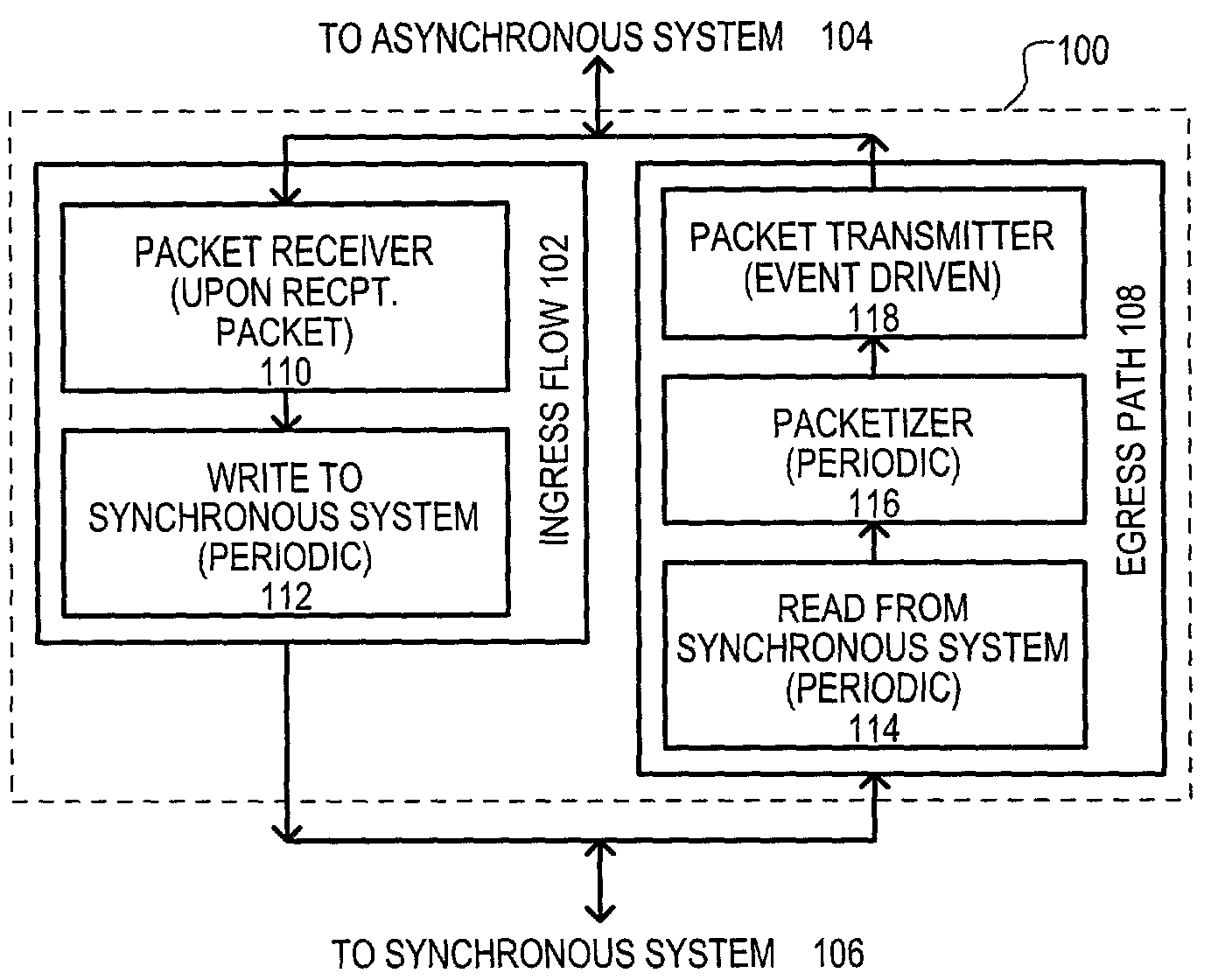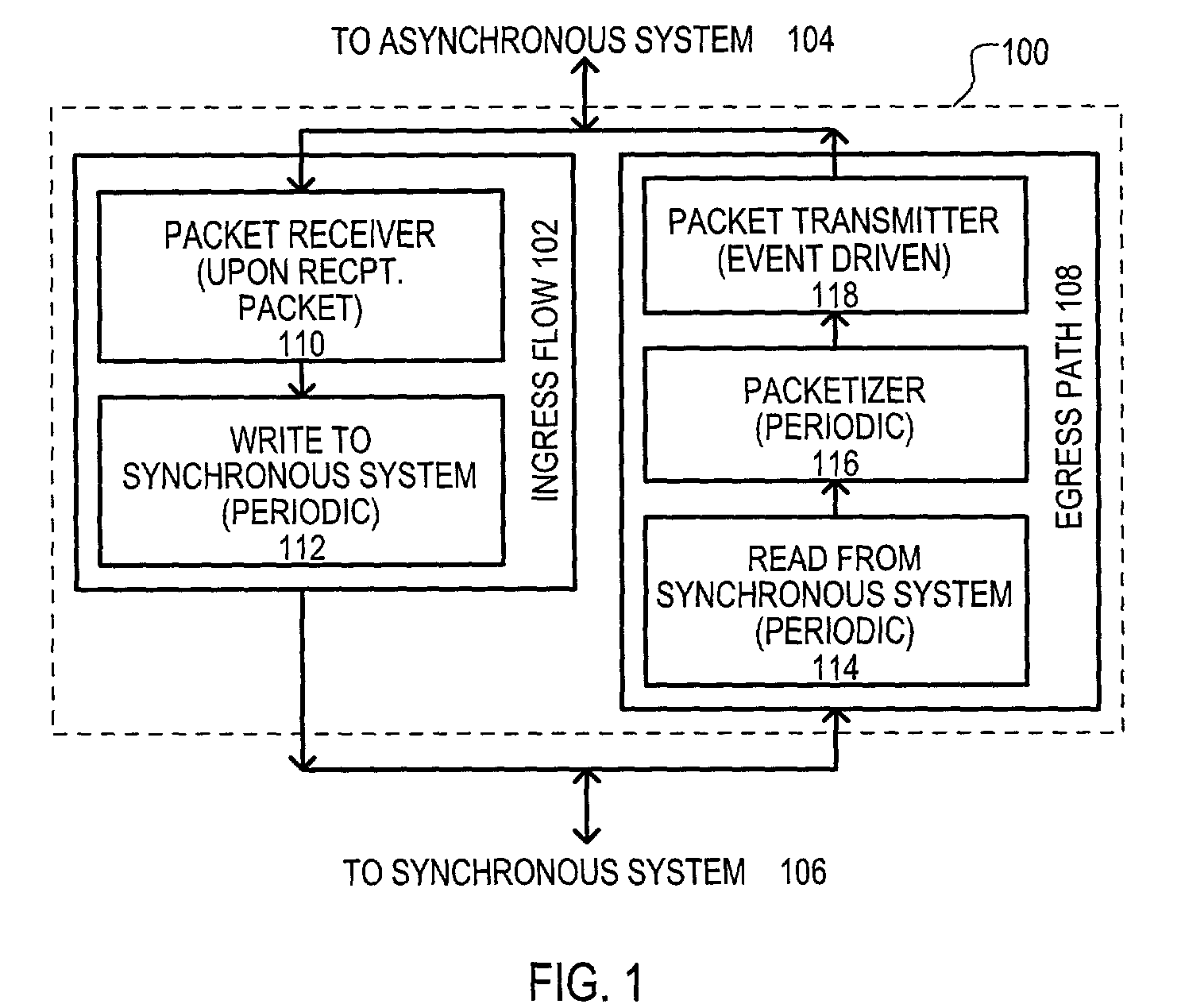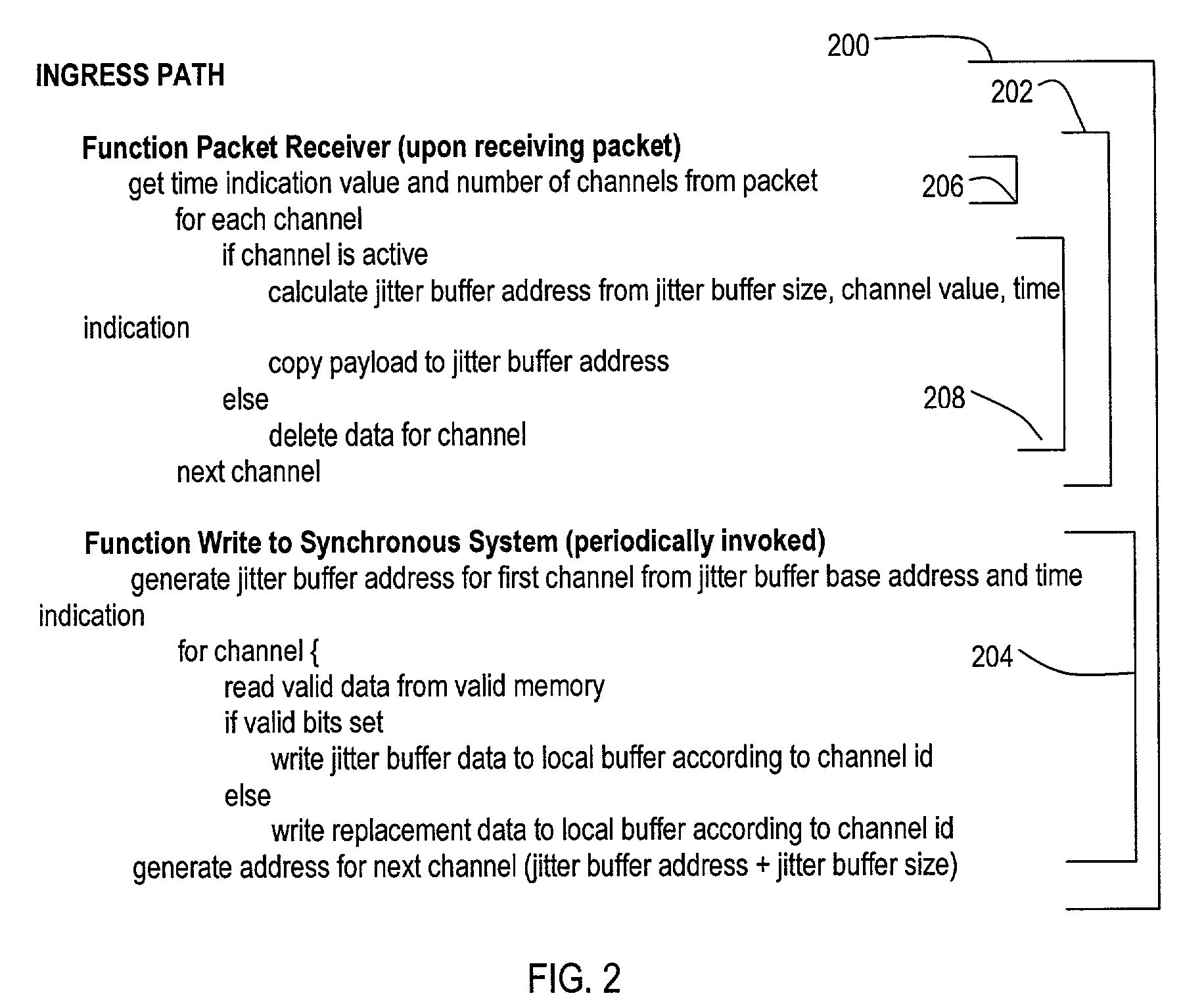Media flow method for transferring real-time data between asynchronous and synchronous networks
- Summary
- Abstract
- Description
- Claims
- Application Information
AI Technical Summary
Benefits of technology
Problems solved by technology
Method used
Image
Examples
first embodiment
[0046]A method is set forth in FIG. 1, and designated by the general reference character 100. A method 100 may be represented by two “flows.” An ingress flow 102 may represent the processing of data received from an asynchronous system 104 for a synchronous system 106. An egress flow 108 may represent the processing of data received from a synchronous system 106 to an asynchronous system 104.
[0047]An ingress flow 102 may include a packet receiver 110 that may be invoked upon reception of a new packet from an asynchronous system 104. Data contained within such packets may be organized by a packet receiver 110 to account for asynchronous transmission delays. In one particular arrangement, data may be stored in a “jitter” buffer to account for the asynchronous rate at which data can be received and / or unpredictable aspects of a network. For example, such a buffering can organize packets of a stream that are out of order, account for lost packets, or account for arrival time jitter (di...
second embodiment
[0054]A second embodiment will now be described with reference to FIGS. 2, 3A and 3B, 4, and 5A and 5B. A pseudocode representation of an ingress path is set forth in FIG. 2, and designated by the general reference character 200. “Pseudocode,” a broad way of expressing the various elements of a flow, may be implemented into particular computer language code versions for use in a system employing a general processor. In addition, the described method can be implemented in a higher-level hardware designing language, to enable the preferred embodiment to be realized as an integrated circuit (IC) or a portion of an IC. Pseudocode is widely used in industry and textbooks to express methods and devices, and would be understood by one skilled in the arts of computer systems and / or hardware designing arts.
[0055]FIG. 2 shows an ingress path 200 that may include a packet receiver function 202 and a write to synchronous system function 204. It is noted that a packet receiver function 202 may b...
third embodiment
[0112]an ingress path will now be described with reference to FIGS. 6A to 6C. FIGS. 6A to 6C may be portions of a single pseudocode example for an ingress path. Thus, it is understood that the pseudocode of FIG. 6C may follow that of 6B, which may follow that of 6A.
[0113]Referring now to FIG. 6A an ingress path may process packets of at least two types: “simplex” packets that may include a payload for a single channel; and multiplex (MUX) packets that may include payloads for multiple channels.
[0114]In the example of FIG. 6A, an ingress path may be assumed to process packets transmitted according to a predetermined protocol, in this case UDP. Thus, particular fields from such a packet may be read to ascertain whether a packet is simplex or multiplex. In FIG. 6A, an initial step includes reading a UDP destination port value, a sequence number, and a timestamp value. Such a step is shown in FIG. 6A as 602.
[0115]A UDP destination port may provide an initial indication. Accordingly, an ...
PUM
 Login to View More
Login to View More Abstract
Description
Claims
Application Information
 Login to View More
Login to View More - R&D
- Intellectual Property
- Life Sciences
- Materials
- Tech Scout
- Unparalleled Data Quality
- Higher Quality Content
- 60% Fewer Hallucinations
Browse by: Latest US Patents, China's latest patents, Technical Efficacy Thesaurus, Application Domain, Technology Topic, Popular Technical Reports.
© 2025 PatSnap. All rights reserved.Legal|Privacy policy|Modern Slavery Act Transparency Statement|Sitemap|About US| Contact US: help@patsnap.com



